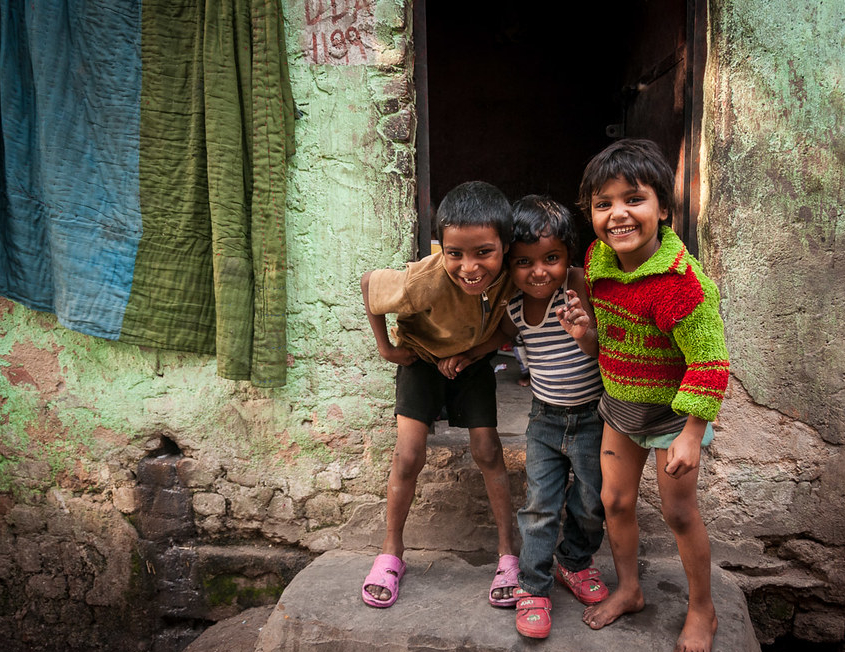Why the United States Should Help Fight Corruption in India
 For years, India has struggled with high rates of extreme poverty, as well as mass amounts of corruption within its economy and government. This has created a cause and effect cycle of poverty: creating easy access for corruption while corruption in government preventing a significant change in poverty. As a result, there has been very little change in the socioeconomic standing of many Indians, and foreign aid may seem like a futile attempt to rectify an impossible situation. However, foreign aid is critical to fighting poverty and corruption in India. And investments from the United States will have a promising profound effect on both countries.
For years, India has struggled with high rates of extreme poverty, as well as mass amounts of corruption within its economy and government. This has created a cause and effect cycle of poverty: creating easy access for corruption while corruption in government preventing a significant change in poverty. As a result, there has been very little change in the socioeconomic standing of many Indians, and foreign aid may seem like a futile attempt to rectify an impossible situation. However, foreign aid is critical to fighting poverty and corruption in India. And investments from the United States will have a promising profound effect on both countries.
Corruption and Poverty in India
In 2019, one in two Indians reported taking or paying a bribe, which was a 10% decrease from previous years. These bribes took all forms and appeared in many aspects of everyday life for Indians, from property registration, the police force, a tax department to municipal corporations. Furthermore, corruption can be found within the highest levels of government, and in legislation in particular. More than half of India’s public officials have received bribes, or acted upon another form of corruption, creating significant inconsistencies and ineffectiveness from the bureaucracy. Most recently, in 2019, the Corruption Perception Index gave India a score of 41 out of 100, suggesting corruption still has a significant presence throughout the country.
While the corruption within the government and economy is an issue on its own, its repercussions go far beyond an internally broken system. India has one of the highest rates of extreme poverty in the world, with one-third of its population considered poor by standards that they live on approximately $3.20 per day. Despite decreasing rates, about 50 million people still live in extreme poverty in India. With so many people resorting to living on the streets or in slums, the poor living conditions lead to disease outbreaks, high infant mortality rates and, ultimately, corruption.
The Connection Between Corruption and Poverty
Corruption and poverty in India work off of each other. Poverty creates desperate situations, leaving people with very few economic alternatives to make ends meet, whether it be food or housing, among other essential needs. Consequently, these vulnerable groups become easily exposed to exploitation. However, corruption not only thrives off of poverty, but it also worsens the situation. Internal government officials, among other community members, tend to pass money around for ranks, rather than focusing on creating effective legislation to change the poverty crisis.
As a result, the government struggles to end the continual cycle of corruption and poverty in India, and cracking down on corruption can have massive repercussions for its citizens. For example, in 2016, in an effort to reduce corruption, Prime Minister Narendra Modi discontinued the 500 and 1,000 rupees. This action began to fix stockpiling, a technique that the upper-class used to avoid paying taxes. The discontinuation voided cash hoarded overnight. And, as a result, many low-income workers had their salaries cut in half, especially those in the transportation industry.
In order to access the new forms of money, many had to go to the ATM or banks to acquire it, despite many ATMs being broken or overcrowded. Without the rich carrying around cash to pay people, such as drivers, in addition to unequal access to ATMs, there was no pay for people working already low-paying jobs. During that year, 97% of Indians didn’t make enough annual salary to qualify to pay income tax, a price of around 250,000 rupees, or $3,650.
The Importance and Benefits of American Foreign Aid
For many Americans, corruption and poverty in India may seem like the exact reason why the United States should not be investing its money in foreign aid, especially to India. However, the solution is contrary to what many may believe. Multiple studies have shown that corruption with foreign aid is an insignificant problem, compared to the solutions it provides, such as access to clean water and vaccinations. Besides the humanitarian solutions, investment in India has significant returns for the United States. With a continually growing economy, India is set to become the third-largest consumer market by 2025. In turn, this will have a significant, positive impact on the United States’ economy. Continuing to invest in India means that more and more people will not only be in the market but will be able to afford American exports, therefore improving the corruption and poverty rates of India, as well as increasing American jobs and the economy as a whole.
—Alyssa Hogan
Photo: Flickr
